If you’re wondering what to see in Estonia, prepare yourself for a hidden gem bursting with charming medieval towns, vibrant culture, and luxurious retreats. Estonia beautifully blends history and modernity, offering travelers a rare escape from the ordinary.
Whether you’re captivated by majestic castles or intrigued by untouched natural beauty, Estonia promises unforgettable experiences. From Tallinn’s fairy-tale streets to idyllic islands dotted with spas, Estonia caters perfectly to those who seek peaceful getaways and adventure.
Ready for an enchanting journey? Let’s explore Estonia’s most magical spots together!
Key Takeaways
-
Estonia offers a unique blend of medieval towns, vibrant culture, and untouched natural beauty.
-
Top historical sites include Tallinn’s Old Town, Narva Castle, and Rakvere Castle with rich stories and interactive experiences.
-
Cultural highlights like Viljandi and Tartu showcase Estonia’s music, arts, and academic heritage.
-
Natural wonders such as Lahemaa National Park, Saaremaa and Hiiumaa islands, and Soomaa National Park offer scenic trails, wildlife, and outdoor adventures.
-
Pärnu combines seaside relaxation with spa heritage, making it Estonia’s “Summer Capital.”
-
For an immersive experience, consider joining a private tour with local experts to uncover hidden gems and authentic stories.
What to See in Estonia: Historical Gems
1. Tallinn’s Old Town
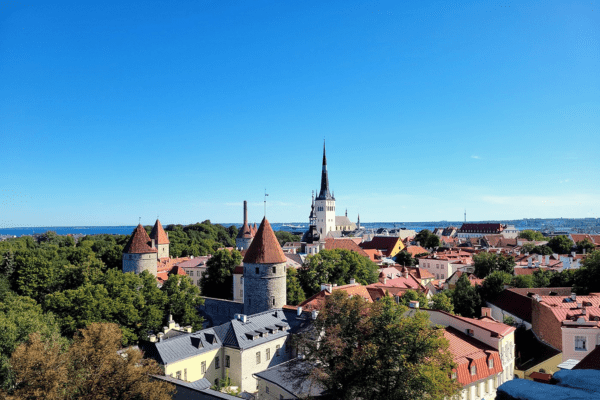
Did you know that Tallinn was once home to Europe’s tallest building, the spire of St. Olaf’s Church? Today, visitors can still go up to the top of the tower and enjoy breathtaking panoramic views.
Tallinn’s Old Town is an exceptionally well-preserved medieval city that dates back to the 13th century. Historically significant as a major trading hub for the Hanseatic League, its cobblestone streets and medieval buildings showcase tales of ancient merchants, knights, and artisans.
If you are interested in learning more about how Tallinn survived various invasions and fires while maintaining its medieval charm intact, Tallinn’s Old Town is the perfect spot for you to visit.
Highlights & Attractions
- Explore one of Europe’s best-preserved medieval cities.
- Enjoy panoramic views from Toompea Hill and St. Olaf’s Church.
- Visit unique museums showcasing Estonian history and culture.
2. Narva

How about a fun stroll through the intriguing border town of Narva? Also founded in the 13th century, it is Estonia’s easternmost city that blends Estonian and Russian cultures. Its most prominent landmark, Narva Castle, has witnessed centuries of battles and diplomatic negotiations.
Across the Narva River lies the Ivangorod Fortress in Russia, symbolizing the historical tensions and cultural exchanges between these two countries. With the town being so close to Russia, Narva has the highest proportion of Russian speakers in Estonia, reflecting its unique cross-cultural heritage.
Highlights & Attractions
- Explore the historical border fortress with dramatic river views.
- Experience an authentic blend of Estonian and Russian cultures.
- Visit the historic Kreenholm textile mills that were once Europe’s largest in history.
3. Rakvere Castle
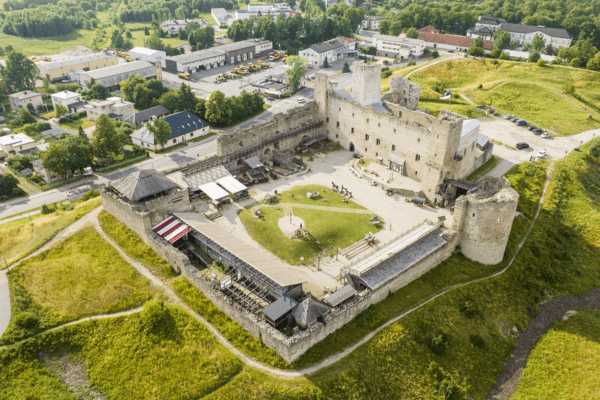
Located in the northern part of Estonia, Rakvere Castle was originally constructed by the Danes in the 13th century. Throughout centuries of wars, Rakvere repeatedly changed hands among Germans, Swedes, Russians, and Estonians.
Today, it’s an interactive historical site offering visitors medieval reenactments, weapon displays, and hands-on activities. If you are traveling around the northern cities of Estonia, remember to visit this historical monument for a historic tour! A fun fact before you visit: the castle is famous for its life-size statue of a bull, symbolizing strength and resilience.
Highlights & Attractions
- Enjoy interactive medieval experiences and events.
- Participate in hands-on workshops such as medieval cooking.
- Discover intriguing legends and myths associated with the castle.
What to See in Estonia: Cultural Highlights
4. Viljandi

Are you a lover of music? Then Viljandi, a quaint town in southern Estonia, is the right place for you! Viljandi has roots stretching back to the 13th century, known for its vibrant cultural scene, particularly in folk music.
This charming town annually hosts the Viljandi Folk Music Festival, attracting visitors from around the globe. The historic ruins of Viljandi Castle serve as the backdrop for this lively event. Hence, Viljandi is often referred to as the cultural capital of Estonia due to its emphasis on music and the arts.
Highlights & Attractions
- Participate in the internationally acclaimed folk music festival.
- Explore the ruins and natural surroundings of Viljandi Castle.
- Immerse yourself in the lively local arts community.
5. Tartu
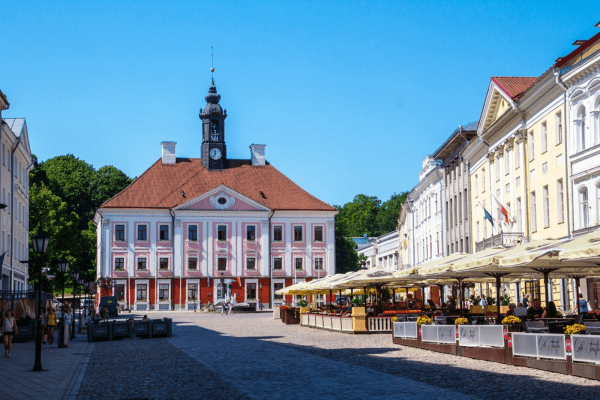
Tartu, Estonia’s second-largest city, is often called the country’s intellectual capital for a good reason. Founded in 1030, Tartu is one of the oldest cities in the Baltic and home to the prestigious University of Tartu, established in 1632 by Swedish King Gustavus Adolphus.
The city has played a vital role in shaping Estonian identity, from the Enlightenment era to the independence movement. Strolling through Tartu’s Old Town, you’ll find beautifully restored 18th and 19th century buildings, cozy cafés, and student hangouts that reflect the city’s youthful energy.
Tartu is also one of Estonia’s most bike-friendly cities, with a seamless cycling infrastructure and city bikes available for rent, making exploration easy and enjoyable for eco-conscious travelers. Whether you’re interested in science, art, or architecture, Tartu offers a refreshing mix of culture, history, and creativity.
Highlights & Attractions
- Explore the Town Hall Square (Raekoja plats), a lively hub of cafés and street performers, surrounded by pastel-hued architecture and anchored by the Tartu Town Hall.
- Discover centuries of academic history inside Estonia’s most renowned university at the University of Tartu Museum.
- Visit the Kissing Students Fountain, an iconic sculpture that is one of Tartu’s most beloved symbols and a popular photo spot.
What to See in Estonia: Natural Wonders
6. Lahemaa National Park
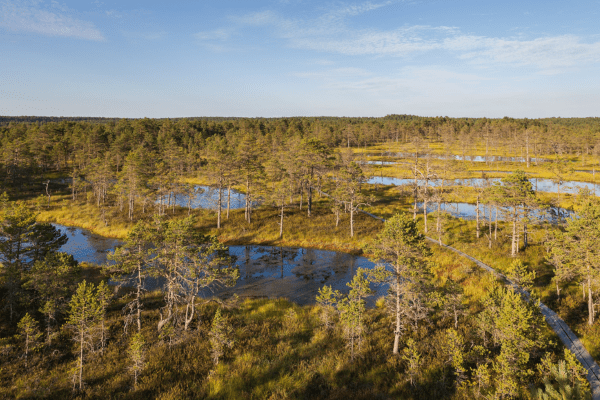
Just an hour from Tallinn, Lahemaa National Park invites visitors to lush forests, picturesque coastal trails, and grand manor houses. Walk through the Viru Bog Trail, where wooden pathways lead you over scenic wetlands and stunning lakes. Established in 1971, Lahemaa is the oldest park in Estonia, and its historic manor houses, such as Palmse and Sagadi, date back to the 18th century.
If you are lucky, you can spot rare species like lynx and moose at the park! This park is ideal for nature lovers seeking a tranquil retreat. Stay in beautifully restored manor houses, providing an upscale experience in a serene, natural setting.
Highlights & Attractions
- Explore Estonia’s largest and oldest national park.
- Visit beautifully restored historical manors such as Palmse and Sagadi.
- Walk along scenic coastal trails and unique bog landscapes.
7. Saaremaa Island

Saaremaa is Estonia’s largest island which has been inhabited since prehistoric times. Known for its fascinating history, Saaremaa features iconic windmills dating back to the 14th century. Visitors can also explore Kuressaare Castle, the only completely preserved fortress complex in the Baltic States.
Another unique landscape of the island is the Kaali meteorite craters, formed about 3,500 years ago, which has a tavern, hotel and a museum connected to the site. If you are looking for an adventurous island experience, Saaremaa has so much to offer!
Highlights & Attractions
- Discover ancient meteorite craters at Kaali Meteorite Museum.
- Explore historic windmills and Kuressaare Castle.
- Enjoy the island’s peaceful, unspoiled beaches such as Kuressaare beach.
8. Hiiumaa Island
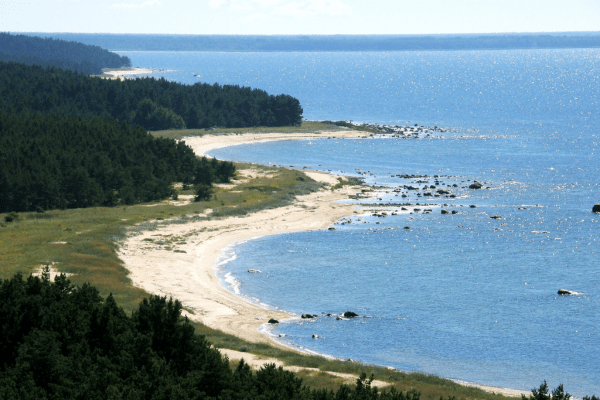
Less visited than Saaremaa, Hiiumaa offers tranquil beaches, dense forests, and quaint villages. It is the second largest island in Estonia, located in the western Estonian archipelago.
Historically significant due to its maritime heritage, the island is home to Kõpu Lighthouse, one of the oldest continuously operating lighthouses globally, built in 1531. Travelers can also find secluded hiking and trekking trails by the beach for a more authentic Estonian holiday experience.
Highlights & Attractions
- Visit Kopu Lighthouse for a panoramic view of the island.
- For a family-friendly experience, visit the Windower Experience Centre.
- Explore the natural beach trails of Sääretirp.
9. Soomaa National Park
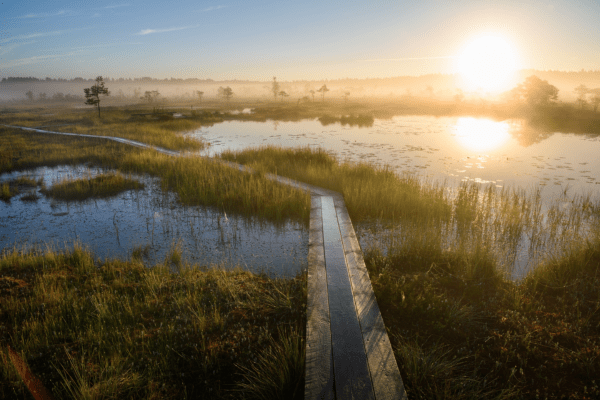
Experience Estonia’s wilderness at Soomaa National Park, famous for its seasonal floods, known as Estonia’s “fifth season.” Visitors can enjoy guided canoe tours, birdwatching, and bog-shoe (a special pair of shoes to walk through the biggest bog in Estonia, Kuresoo) hiking.
This great natural escape allows you to immerse yourself in hiking trails and wildlife, but also offers a farm museum, cooking tours, craft shops, or even an ice skating experience during winter!
Highlights & Attractions
- Experience the unique “fifth season” floods via canoes and bog-shoe hiking.
- Enjoy diverse wildlife and serene nature trails in Kuresoo.
- Visit the local Farm Museum at Kurgja or the Cider and Wine Farm.
10. Pärnu

Pärnu, Estonia’s fourth-largest city, is a lively gem on the Gulf of Riga’s scenic coastline. Founded in 1251, this historic town has been shaped by various rulers and cultures, creating a charming blend of medieval heritage and modern vibrancy.
Since the 19th century, when its first bathing facility opened in 1838, Pärnu has thrived as a beloved seaside resort. Today, it’s celebrated as Estonia’s “Summer Capital,” welcoming visitors with its soft sandy beaches, historical museums, and of course, its renowned bathing heritage. Pärnu combines old-world charm with fresh adventures, making it an unmissable stop when exploring what to see in Estonia.
Highlights & Attractions
- Sunbathe and stroll along one of Estonia’s most beloved beaches at Pärnu Beach and Promenade.
- Visit the Pärnu Mud Baths, which were established in 1927, to enjoy therapeutic treatments rooted in the city’s spa heritage.
- Dive into 11,000 years of local history and culture at the Pärnu Museum.
Conclusion
Our list on what to see in Estonia shows how it truly offers an enchanting escape for all types of travelers, with every corner of the country revealing something new and captivating. From medieval streets in Tallinn and lively festivals in Viljandi to the peaceful shores of Saaremaa and the mysterious bogs of Soomaa, this country promises a unique adventure for anyone curious enough to explore.
To truly dive into Estonia’s magic, why not join our Amitylux Tallinn private tour? Our small group tours are led by friendly local experts, bringing Tallinn’s history and charm to life in a way that’s personal and memorable. Ready to keep exploring? Check out our guide to the top places to visit in Tallinn and let your Estonian adventure begin!
Frequently Asked Questions
Estonia offers a rich history, stunning nature, and vibrant culture, with folk music and spa heritages rooted in various historical towns that create unforgettable experiences for every traveler.
Estonia is famous for its beautifully preserved medieval cities such as Tallinn, Tartu, and Saaremaa. Also, it is known for pristine natural landscapes such as Soomaa National Park and Lahemaa National Park.
Tallinn’s Old Town is Estonia’s most visited destination, attracting travelers worldwide with its medieval charm and historic attractions.




